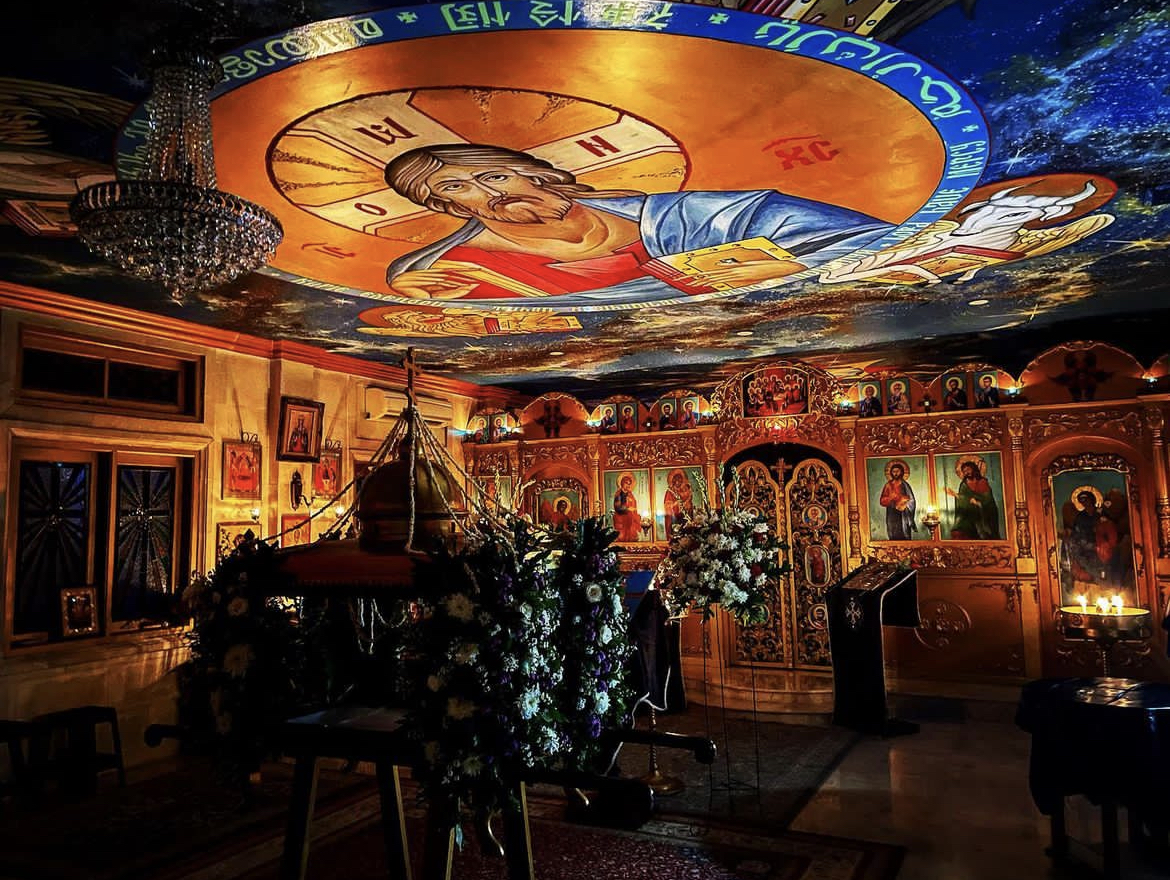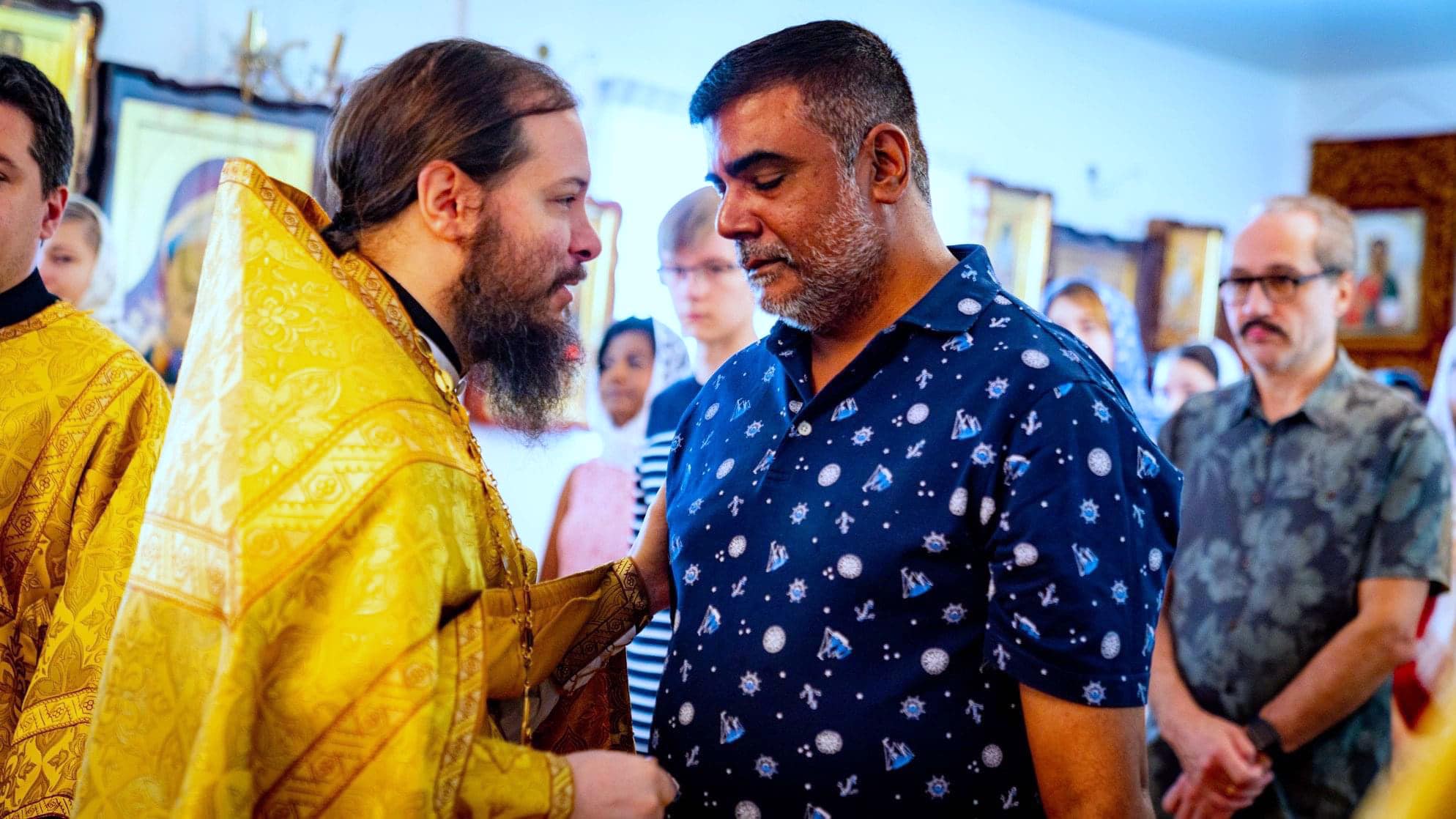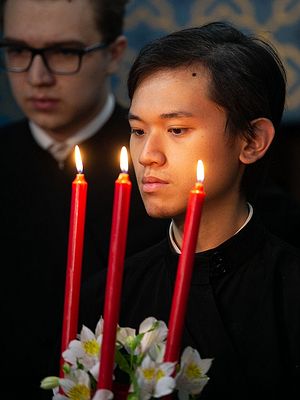Meetings with the Orthodox os South-East Asia – truely a first-christian moment

The Patriarchal Exarchate of South-East Asia was formed in December 2018 and unites four dioceses
located in 13 countries of the region. Peculiarities of ministering to the peoples for whom Orthodoxy is
exotic, how Pascha was celebrated with epidemic restrictions, and why Papua New Guinea recognized
itself as a Christian country – this is what the Patriarchal Exarch of South-East Asia, Metropolitan Sergiy of Singapore and South-East Asia has shared with Interfax-Religion about.
– How was Pascha celebrated in South-East Asia? The epidemiological situation in the region is not so good. Were the churches open?
– Paschal services in the countries of the Patriarchal Exarchate of South-East Asia were performed in the same way as in all the churches of the Russian Orthodox Church, according to the typicon and in compliance with the prescribed measures, which take into account the epidemiological situation in each specific region. A number of countries have partially introduced a lockdown. For example, in Cambodia, it is forbidden to move between areas, and in Thailand, a common traditional meal after the festive service was cancelled. Many parishes had a pre-registration for services so that the number of parishioners in the church did not exceed the recommended number.
Among the differences between the celebration of Pascha in the countries of South-East Asia versus Russia are the widespread hot climate and high humidity. But the main thing is that the churches were open, and we had the opportunity to glorify the Risen Creator and to perform the statutory Lenten services as well as the joyful services of the first Paschal days.
– The exarchate includes the territories of several states. What is the total number of Orthodox Christians in the Exarchate?
– Almost a billion people live in South-East Asia, but we need to understand that the absolute majority of them are followers of religions traditional for each country. We respect the centuries-old cultural, historical, and religious traditions of the peoples of the countries that fall under the pastoral responsibility of the Patriarchal Exarchate. Our ministry here was organized primarily for the Orthodox believers from the countries of the canonical territory of the Russian Orthodox Church who, due to their occupation, found themselves far from home and were deprived of the opportunity to attend church and participate in its sacraments.
The exarchate itself is by no means a new church formation of the Russian Orthodox Church in Asia. The emergence and spread of Orthodoxy in the Asia-Pacific region is largely associated with the development of Siberia and the Far East in the 17th century and the establishment of trade and diplomatic relations between Russia and China, Korea, and Japan.
In 1713, the Holy Synod established the Russian Ecclesiastical Mission in China. The mission in Japan was established in 1870, and a century later, the Japanese Orthodox Church created by the efforts of Russian missionaries received its autonomy – an independent church existing within the Moscow Patriarchate. The Orthodox mission in Korea officially appeared in 1897, but the Russian Church began enlightening Koreans back in the 1850s. In the thirties of the last century in the Philippines, on the basis of the appeal of the Russian diaspora in Manila, a parish was created in honour of the Iveron Icon of the Mother of God. At the same time, the first Russian Orthodox parish in Indonesia appeared on the island of Java. The various presence of the Russian church in Asia was united under the East Asian Exarchate created by the decree of Patriarch Alexy I in 1946. For historical and political reasons, the activity of the exarchate was terminated in 1954.
Therefore, the emergence of the Patriarchal Exarchate of South-East Asia, which currently includes more than 70 Orthodox parishes located in 13 countries of South-East Asia, is a continuation of the works of our predecessors, the revival of the activities of the once existing church structures, and the restoration of historical justice.
– One of the new missionary directions has been the work in Papua New Guinea. How do the Papuans celebrate Pascha and what kind of missionary work is now being done on the island?
– Not so long ago, the country’s executive council has taken the decision to officially declare the country to be a Christian one. The preamble to the Constitution states that Papua New Guinea is based on “cultural heritage and Christianity.” The missionary work in Papua New Guinea has been renewed. The Russian Orthodox mission is returning to the place where our compatriots, such as Nikolai Nikolaevich Miklukho-Maclay, the famous Russian traveller and explorer, have already stepped in.
On August 25, 2020, the Holy Synod of the Russian Orthodox Church took the decision to include Papua New Guinea and East Timor into the Diocese of Singapore. Several Orthodox parishes were opened there, and in the autumn of the same year, the first Orthodox Christian was baptized. I am planning to personally visit the parishes as soon as the quarantine measures are relaxed.
– How did the inhabitants of the region observe Great Lent? Probably, it is easier for them to fast because they traditionally do not eat meat, and their diet contains a lot of fruits and vegetables. How is the lenten menu in those regions different from the non-lenten one?
– Local residents observe Great Lent the same way as all other believers of the Russian Orthodox Church. Of course, a variety of food and abundance of fruit and vegetables make it easier for the faithful in the countries of the exarchate to observe the restrictions in food, but we should not forget that Great Lent is first of all a spiritual effort and a time when believers pay special attention to the struggle with their passions and sins in order to acquire the virtues.
– What struck you most when you first came to the South-East Asia region?
– I was struck by the people and their sincere interest in Christ and in the pure Christian faith. My first impression of visiting the local Orthodox communities is hard to describe. Most of the churches are just bamboo chapels or rented rooms in private homes. I saw the eyes of the people who had never visited a traditional Orthodox church, had never heard the singing of an Orthodox choir, but who were happy to welcome Orthodox clergy in their small parishes. Those were very special meetings – truly a first-Christian moment. The local Orthodox communities had repeatedly asked to send them priests for their pastoral care in the region. [In Russia] We are so accustomed to many things related, for example, to divine services, that we are not surprised by anything, but here people who have found Christ sometimes radically change their lives, and they are sincerely and eagerly interested in everything Orthodox, in particular, even the aesthetics of divine services.
– What are the plans of the exarchate? Which directions in the missionary service do you consider to be the priorities?
– Among the projects of the exarchate, we pay special attention to social ministry. This activity is particularly well-developed in the Philippines, but there is a demand for it in almost all the countries of the region. The Diocese of the Philippines and Vietnam has established a Department of Charity & Social Ministries, which provides food and vitamins to children from low-income families on a weekly basis. The ministry is headed by the Orthodox priest David Grubbs. Last year, more than 3,000 families received food packages, personal care and school supplies, and over 20,000 meals a month were distributed through the child-feeding program. Humanitarian aid is also provided to the local residents who have lost their jobs since the pandemic began and have not been employed yet. The Philippines is prone to natural disasters, earthquakes and floods, and people lose not only their jobs, but also a roof over their heads. Moreover, our parishes are trying to help not only Orthodox Christians, but everyone who asks for help.
We continue the saving ministry of our Mother Church and are grateful to God for the opportunity to fulfil the Gospel commandment that our Lord Jesus Christ gave to His disciples on the eve of His Ascension: “Go ye therefore, and teach all nations, baptizing them in the name of the Father, and of the Son, and of the Holy Ghost” (Matt. 28: 19-20).
Almost immediately after the establishment of the parish of Blessed Matrona of Moscow in Davao, the need arose in the Philippines to organize an educational and training centre for the local Orthodox priests. At this centre, young people also learn musical notation and the basics of the Orthodox faith. There are also Orthodox pastoral courses in the Thai diocese on the island of Phuket. As a result of the labours of the priests and teachers of those schools, a number of Orthodox youth from Indonesia, the Philippines, Thailand, and Korea were admitted to the theological schools of the Russian Orthodox Church. We hope that in the future, having become worthy shepherds, they will continue our common mission and convey the pure teaching about Christ, preach the unchanged apostolic faith among the wonderful and peace-loving peoples of all the countries of South-East Asia. There is objectively a lack of priests in the countries of the exarchate, so the words of the Saviour “The harvest truly is plenteous, but the labourers are few;” (Matt. 9: 37) are relevant to us as never before.
Through our ministry, we convey to people, first of all, that the Orthodox faith is a preaching of kindness, peace, love, and mutual help. Christ once addressed His disciples: “A new commandment I give unto you, That ye love one another; as I have loved you, that ye also love one another. By this shall all men know that ye are my disciples, if ye have love one to another” (John 13: 34-35). The fulfilment of this commandment is the priority of our ministry.
Metropolitan Sergiy of Singapore and South-East Asia
Source: Interfax-religion

A Deeper Look at the Russian Orthodox Community in Jakarta

“The Lord was leading me in the right direction”
